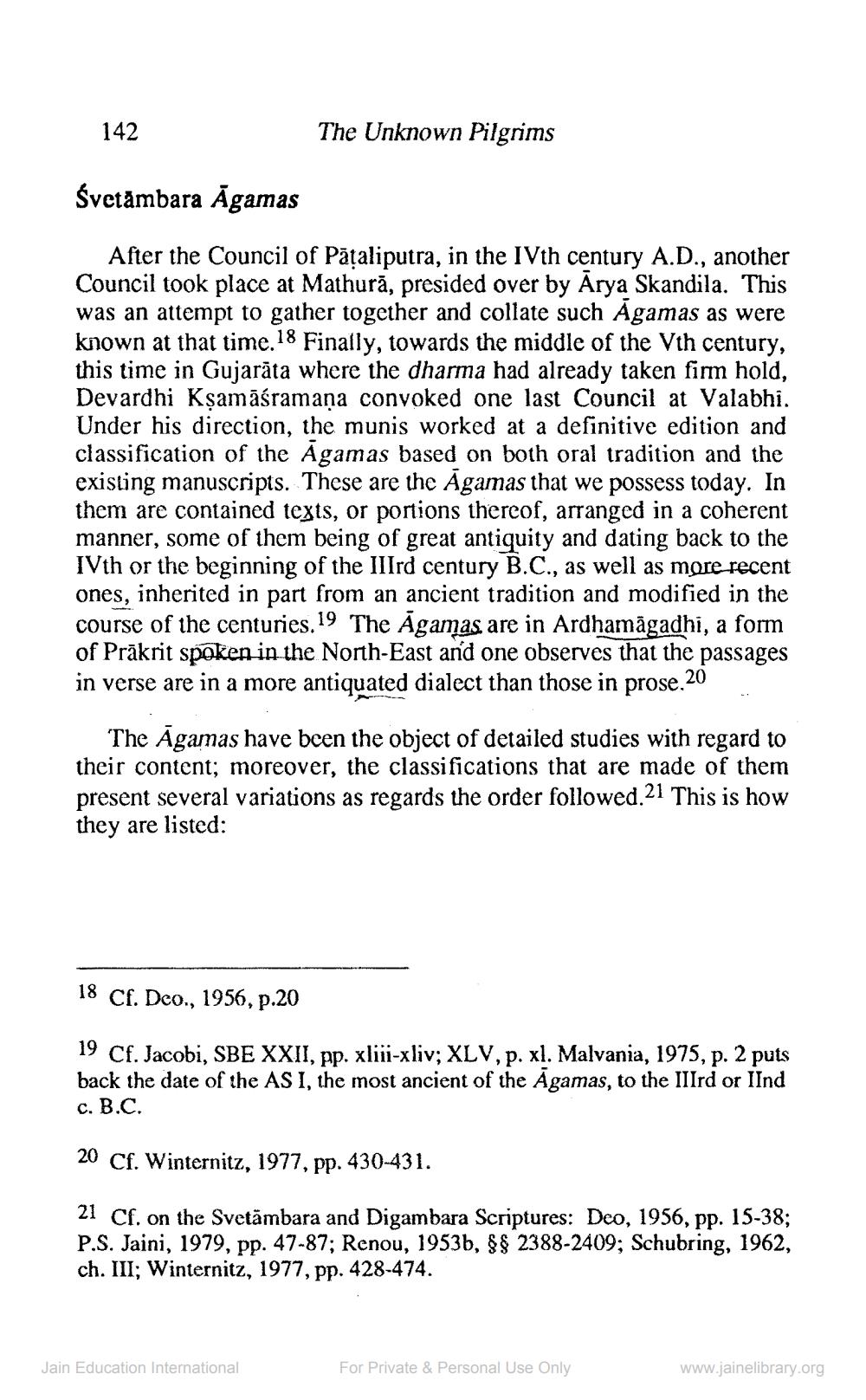________________
142
The Unknown Pilgrims
Śvetambara Agamas
After the Council of Pāšaliputra, in the IVth century A.D., another Council took place at Mathurā, presided over by Arya Skandila. This was an attempt to gather together and collate such Agamas as were known at that time. 18 Finally, towards the middle of the Vth century, this time in Gujarāta where the dharma had already taken firm hold, Devardhi Kșamāśramana convoked one last Council at Valabhi. Under his direction, the munis worked at a definitive edition and classification of the Agamas based on both oral tradition and the existing manuscripts. These are the Agamas that we possess today. In them are contained texts, or portions thereof, arranged in a coherent manner, some of them being of great antiquity and dating back to the IVth or the beginning of the IIIrd century B.C., as well as more recent ones, inherited in part from an ancient tradition and modified in the course of the centuries. 19 The Āgamas are in Ardhamāgadhi, a form of Prākrit spoken in the North-East and one observes that the passages in verse are in a more antiquated dialect than those in prose 20
The Agamas have been the object of detailed studies with regard to their content; moreover, the classifications that are made of them present several variations as regards the order followed.21 This is how they are listed:
18 Cf. Deo., 1956, p.20
19 Cf. Jacobi, SBE XXII, pp. xliii-xliv; XLV, p. xl. Malvania, 1975, p. 2 puts back the date of the ASI, the most ancient of the Agamas, to the IIIrd or IInd c. B.C.
20 Cf. Winternitz, 1977, pp. 430-431.
21 Cf. on the Svetāmbara and Digambara Scriptures: Deo, 1956, pp. 15-38; P.S. Jaini, 1979, pp. 47-87; Renou, 1953b, 88 2388-2409; Schubring, 1962, ch. III; Winternitz, 1977, pp. 428-474.
Jain Education International
For Private & Personal Use Only
www.jainelibrary.org




